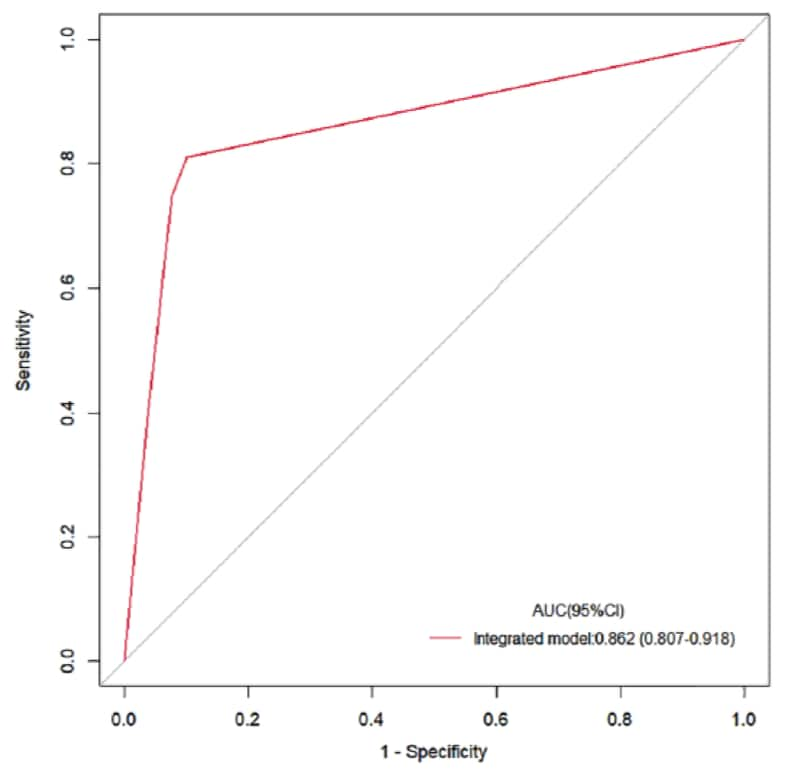A multivariate model based on gadoxetic acid-enhanced MRI using Li-RADS v2018 and other imaging features for preoperative prediction of dual phenotype hepatocellular carcinoma (DPHCC)
Gd-EOB-DTPA MRI effectively differentiates between DPHCC and non-DPHCC.
A retrospective study2 of 427 consecutive HCC patients who underwent hepatectomy analyzed both unenhanced and enhanced MRI (Gd-EOB-DTPA MRI) using the Liver Imaging Reporting and Data System (LI-RADS) v2018 scoring system to differentiate DPHCC from non-DPHCC. Multivariate logistic regression showed that rim arterial phase hyperenhancement (APHE) and targetoid restriction were independent factors for DPHCC positivity (Table 1). The area under the curve (AUC) suggests a high sensitivity and specificity (Fig. 1). Altogether, these data demonstrate that Gd-EOB-DTPA MRI could enable targeted preoperative differentiation of DPHCC and non-DPHCC and guide subsequent treatment selection.
Table 1. Univariate and multivariate logistic regression analysis for DPHCC
| Parameter | DPHCC | Univariate analysis | Multivariate analysis | ||
| OR (95% CI) | P | OR (95% CI) | P | ||
| Rim APHE | Positive | 35.891 (13.542–95.124) | <0.001 | 24.122 (8.812–66.032) | <0.001 |
| Negative | 1 | 1 | |||
| Targetoid restriction | Positive | 12.391 (4.522–33.955) | <0.001 | 3.990 (1.171–13.601) | <0.027 |
| Negative | 1 | 1 |
CI, confidence interval; DPHCC, dual-phenotype hepatocellular carcinoma; OR, odds ratio; rim APHE, rim arterial phase hyperenhancement.
Fig. 1. Gd-EOB-DTPA MRI nomogram predicts the receiver operating characteristic curve of DPHC with a sensitivity of 81.01% and a specificity of 89.874% (AUC = 0.862).
Fig. 1. Gd-EOB-DTPA MRI nomogram

AUC, area under the curve; CI, confidence interval.
References:
- Liu, Mao-Tong, et al. A multivariate model based on gadoxetic acid-enhanced MRI using Li-RADS v2018 and other imaging features for preoperative prediction of dual phenotype hepatocellular carcinoma. La radiologia medica (2023): 1-14.
https://pubmed.ncbi.nlm.nih.gov/37740839/


